Functional Development Important Notes
- Trajectories
- Benningh described lines of stress as trajectories
- Trajectories lines are:
- In maxilla
- Frontonasal buttress
- Malar-zygomatic buttress
- Pterygoid buttress
- In mandible
- Condyle to symphysis
- Ramus through spongiosa
- The lower border of the mandible
- Mylohyoid ridges
- Wolff’s law of bone transformation
- According to it, unlike other connective tissue, bone responds to mild degrees of pressures of pressure and tension by resorption of existing bone and deposition of new bone.
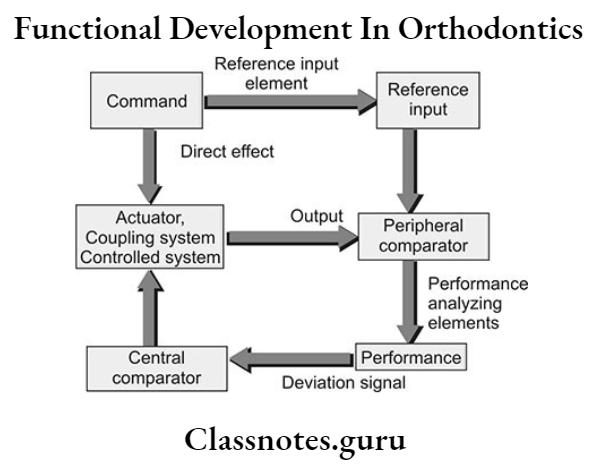
Functional Development Short Essays
Question 1. Muscles of mastication (or) Role of muscles of mastication.
Answer.
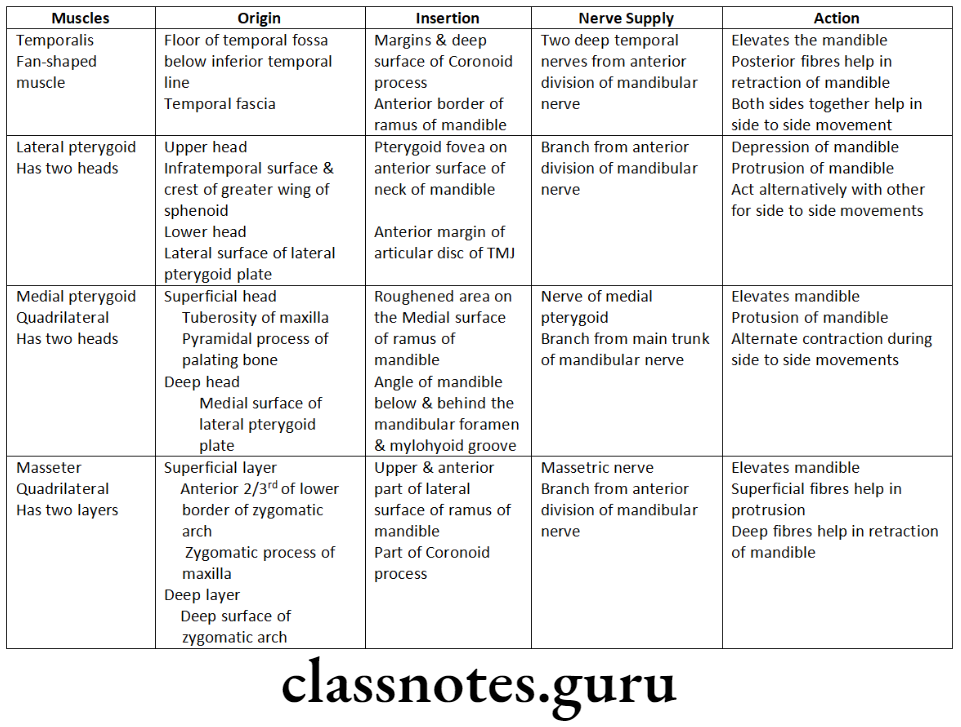
Question 2. Mastication.
Answer.
It is a complex activity aimed at breaking down and insalivation of the food, preparing to swallow.
Phases:
By Murphy
- Preparatory Phase:
- Ingested food positioned towards the chewing side
- Movement of the mandible to the same side
- Food contact:
- Sensory receptors evaluate the viscosity of ingested food and load on the masticatory apparatus
- Crushing Phase:
- Food is crushed equally by both arches
- Starts with high velocity and gradually slows down
- Tooth contact:
- End of crushing phase
- Teeth are in contact with each other
- Guiding Phase:
- Unilateral contact of teeth
- Centric occlusion:
- Teeth come to a definite and distinct stop
Question 3. Infantile Swallowing.
Answer.
- Limited to breastfeeding
- Position of the tongue over lower gum pad protruding between lower lop and nipple
- Milk is directed to the pharynx by peristaltic movement of the tongue and mylohyoid
- Passage of milk between faucal pillars and lateral channels of pharynx
Features Of Infantile Swallowing:
- By Moyers
- Jaws are apart
- Tongue positioned between both the arches
- Stablilization of the mandible by contraction of muscle
- Controlled swallowing by nerve innervations
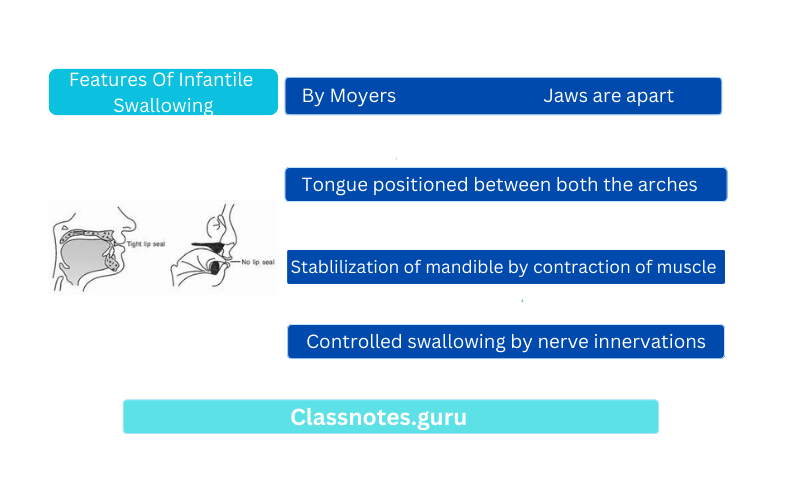
Period Of Infantile Swallowing:
- From breastfeeding till the child is used to semi-solid or solid food
Transformed To:
- Mature swallowing
Read And Learn More: Orthodontics Short And Long Essay Question And Answers
Question 4. Mature swallowing.
Answer.
Age: 1 year
Phases:
- Preparatory swallow:
- Features:
- Placement of bolus over tongue
- Jaws are apart
- Contraction of cheek muscles
- Stabilization of jaw
- Teeth are occluded
- Oral cavity is sealed when the posterior aspect of tongue is pressed against soft palate
- Features:
- Oral phase:
- Sealed nasal cavity by raising soft palate
- Posterior portion of tongue is dropped down
- Creation of smooth path for movement of bolus
- Pharyngeal phase:
- Passage of food through facial pillars
- Reflex of pharyngeal complex
- The peristaltic movement of food
- Oesophageal phase:
- Passage of food to cricopharyngeal sphincter
- The peristaltic activity of oesophageal walls
- Return of tongue and soft palate to their original position
Question 5. Deglutition.
Answer.
- Fletcher divided the deglutition pattern into four stages
Preparatory Swallow:
Features Of Preparatory Swallow:
- Placement of bolus over tongue
- Jaws are apart
- Contraction of cheek muscles
- Stabilization of jaw
- Teeth are occluded
- The oral cavity is sealed when the posterior aspect of the tongue is pressed against the soft palate
Oral Phase
- Sealed nasal cavity by raising the soft palate
- The posterior portion of the tongue is dropped down
- Creation of a smooth path for the movement of bolus
Pharyngeal Phase
- Passage of food through facial pillars
- Reflex of pharyngeal complex
- The peristaltic movement of food
Oesophageal Phase:
- Passage of food to cricopharyngeal sphincter
- Peristaltic activity of oesophageal walls
- Return of tongue and soft palate to their original position
Question 6. Buccinator Mechanism.
Answer.
Teeth and their supporting structures are blanketed from all directions by muscles.
- Thus relationship of teeth with each other and with that of the opposite arch is influenced by these muscles
- Oral cavity is surrounded by no.of muscles starting fibers of lop → muscles around the corner of mouth → buccinator muscle → pterygomandibular fibers → superior constrictor.

- The dento-alveolar region is surrounded by this band of muscle called buccinators mechanism
- Opposing this there is a very powerful muscular organ tongue
- Thus dentition is in constant equilibrium between the buccinator mechanism and the tongue
Question 7. Trajectories of force.
Answer.
It states that the lines of orientation of bony trabeculae corresponds to the pathways of maximal pressure and tension and that bone trabeculae are thicker in the region where the stress is greater

Trajectories Of Force
Classification: In Maxilla:
Vertical
- Fronto-nasal buttress

- Mala-Zygomatic
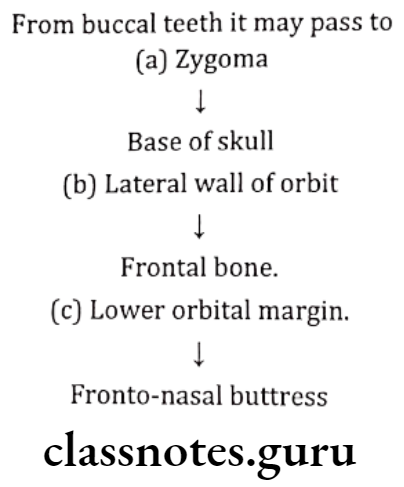
- Pterygoid buttress
From 2nd & 3rd molar
Horizontal:
- Hard palate
- Orbital ridges
- Zygomatic arches
- Palatal bone
- Lesser Wing of sphenoid.
In Mandible:
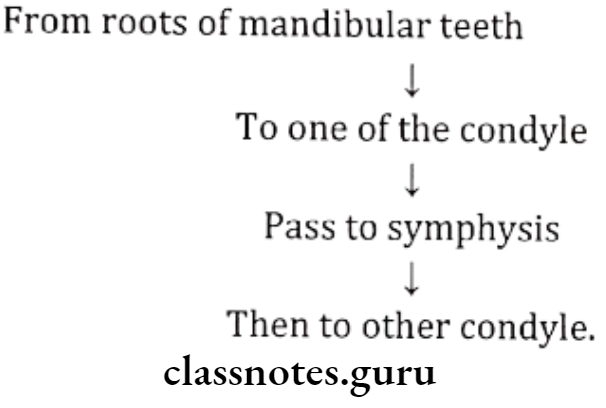
- Lower border of mandible
- Mylihyoid ridge
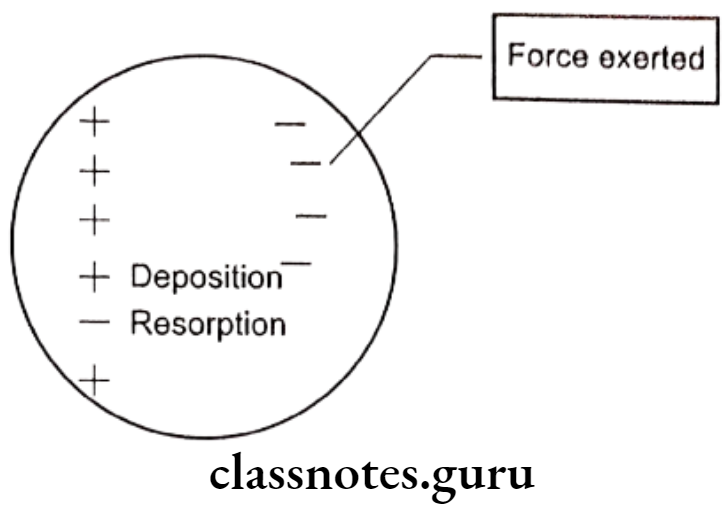
Question 8. Wolff’s law of Bone Transformation.
Answer.
- Bone responds to mild degrees of pressure and tension, by changes in its form
- It is achieved by means of resorption and deposition of bone
Sites Of Wolff’s law:
- Surface of bone under periosteum
- Surface of bony trabeculae
- On the wall of marrow spaces
Features Of Wolff’s law:
Bone is more plastic than any other tissue
“Bone is formed in just the quantity and shape that will enable it to with stand the physical demands made upon it, with the gretes amount of economy of structure”.
It is basis of Wolff’s law
- Not only the amount but the structure is also so formed that it enables the bone to withstand the forces exterted on it
- The structure of bone is such that it can best withstand the forcs acting on it
Functional Development Short Questions And Answers
Question 1. Muscles of mastication
Answer.

Functional Development Viva Voce
- Six stages of mastication are destribed by Murphy – Preparatory phase, food contact, crushing phase, tooth contact, guiding phase and centric occlusion
- Forms of deglutition/swallowing – infantile and mature
- Phases of deglutition – Preparatory, oral, pharyngeal and oesophagel
- Functional occlusion is also called working side occlusion
- Acquired occlusion is also called habitual occlusion.
